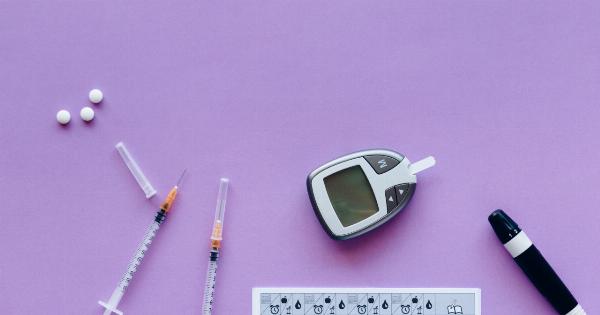Diabetes is a lifelong condition that affects millions of people around the globe. It is a complicated disease that requires constant attention and management.
One of the most important aspects of diabetes management is measuring glycosylated hemoglobin (HbA1c) levels. Measuring HbA1c levels helps people with diabetes and healthcare professionals alike determine how well the disease is being managed.
But how to measure HbA1c levels and what the ideal target range should be is a topic of much debate among healthcare professionals.
What is HbA1c?
HbA1c is a form of hemoglobin found in red blood cells. It is formed when glucose binds to the hemoglobin in the blood. The higher the blood glucose level, the higher the HbA1c level.
HbA1c measurements provide a picture of average blood glucose levels over the past two to three months. The American Diabetes Association (ADA) recommends that people with diabetes have their HbA1c levels checked at least twice a year.
Current Guidelines for HbA1c Target Ranges
The HbA1c target range for people with diabetes varies depending on individual circumstances. The ADA recommends an HbA1c target range of less than 7% for most people with diabetes.
However, if an individual has other health conditions or has a limited life expectancy, a higher target range may be more appropriate. Recently, the American College of Physicians (ACP) released new guidelines recommending an HbA1c target range of 7% to 8% for most people with diabetes to avoid the risk of hypoglycemia.
The ACP’s New Guidelines: Pros and Cons
The ACP’s new guidelines have been met with mixed reactions. Some healthcare professionals applaud the new, more relaxed target range as it reduces the risk of hypoglycemia.
Others, however, are concerned that the new guidelines will discourage people with diabetes from striving for optimal glucose control, which could lead to long-term complications such as neuropathy and retinopathy. The ADA, for example, has expressed its concern about the new guidelines, stating that it remains committed to helping people with diabetes achieve optimal glucose control.
The Importance of Glucose Control
The risk of long-term complications due to diabetes is closely linked to glucose control. Uncontrolled glucose levels can lead to nerve damage, kidney disease, and blindness.
Therefore, it is important to carefully control blood glucose levels to minimize the risk of long-term complications. The ADA argues that the HbA1c target range of less than 7% remains appropriate for most people with diabetes as it reduces the risk of complications and promotes optimal glucose control.
Balancing Risk and Benefit
The decision about the appropriate HbA1c target range should be made on an individual basis and should take into account the patient’s overall health status, age, and the risk of hypoglycemia.
There is no one-size-fits-all approach to diabetes management. A healthcare professional should work closely with the patient to develop a personalized care plan that takes into account their individual circumstances.
The Future of HbA1c
HbA1c testing is an essential part of diabetes management. Advances in technology have made testing more accurate and convenient.
The development of continuous glucose monitoring (CGM) systems that allow for real-time monitoring of glucose levels has been a game-changer in diabetes management. It is likely that in the future, more precise and efficient methods of detecting glucose levels will become available.
The Bottom Line
The debate around the appropriate HbA1c target range for people with diabetes is ongoing.
While the ACP’s new guidelines have caused controversy, it is important to remember that the decision about the appropriate target range should be made on an individual basis. Healthcare professionals should work closely with people with diabetes to develop a personalized care plan that takes into account their overall health and the risk of hypoglycemia.




























